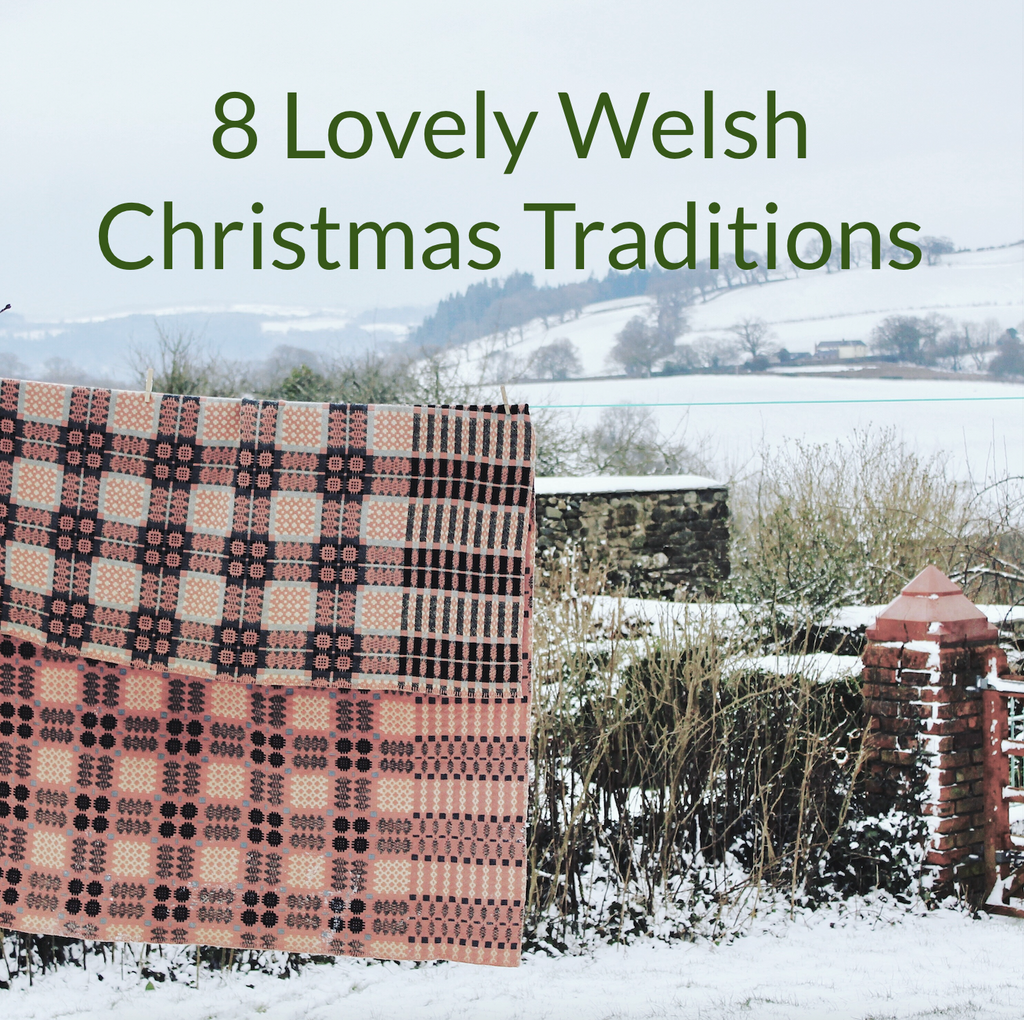
The Dylan Thomas poem ‘A Child’s Christmas in Wales’ speaks of a 'carol-singing sea', 'postmen with 'sprinkling eyes and wind-cherried noses', 'mistletoe hung from the gas brackets in all the front parlours', 'sherry and walnuts and bottled beer and crackers by the dessertspoons' and the mysterious 'parsnip wine' - all references to Christmas and traditions past.
Traditions and childhood memories might involve carols in the local parish church, the smell of woodsmoke from an open fire, rooks chattering from bare winter branches, cold windy beach walks, coming home in the twilight with damp socks, and Welsh cakes accompanied with mulled wine.
Here are a few traditions that I am aware of that are associated with a traditional Welsh Christmas - I would love to hear if you have any more!
- Y Gwyliau: Going back through the years, Christmas in Wales used to be out-shadowed by the New Year celebrations. In the middle of the nineteenth century, Christmas Day marked the beginning of the three week period of holidays (Y Gwyliau) during which farm work was suspended. As a symbol of this, the plough was often carried into the home and placed under the table in the room where the meals were eaten. Christmas Day itself was marked by a dinner of goose or beef at a large farm in each neighbourhood to which all the other farmers and cottagers were invited. They drank beer and 'wetted' the plough that was under the table as a reminder that they had not forgotten it.
- Gŵyl Ystwyll: Traditionally Y Gwyliau lasted over 12 days and culminated in the Gŵyl Ystwyll (Epiphany), but often went on for much longer. Apparently there was a change in the calendar in 1752 and some days were omitted which led to some confusion and some events slowly fading away.
- ‘Thomasing’: Happened on St Thomas’s Day (23rd December) when women went from house to house to beg for flour to make loaves and cakes for Christmas.
- Sports: Team pursuits played a huge part in some local Christmases - in some some areas, football was played until dusk on Christmas Day.
- Mari Lwyd (Grey Mary): A Christmas custom of South Wales involving a horse’s skull covered in a white sheet and decorated with colourful ribbons. A man hidden underneath would make the jaw snap. A group of people (usually dressed up as the characters of a ‘Sergeant’, ‘Merryman’, ‘Punch and Judy’) led the horse from house to house. At each door they performed a sort of 'poetry-off' competition with the occupants, which was often as long as fifteen verses. When they were eventually allowed to enter, they chased everyone by snapping the horses jaws, and then there was feasting. It all sounds a little creepy but in reality was done in jest and fun. It seems to be a form of carol singing (or ‘wassailing’), and often involved drinking wine or punch from a ‘wassail bowl’.
- Siôn Corn: Is literally translated as ‘Chimneypot John’, or the ‘bloke that comes down the chimney’ and is the Welsh Father Christmas or Santa Claus. This one probably only goes as far back as the existence of chimney pots. I have not been able to find out if the story derives from the same Santa Claus / Father Christmas origin, or whether there is a separate old Welsh folklore creeping in here too?
- Plygain: Was an early Christmas morning service (often starting at 4 or 5am) where people gathered in packed rural churches to sing and celebrate. They would sing mainly unaccompanied, three or four part harmony carols in a service that went on until daylight. This would be followed by Christmas feasting, strong ale, oakcakes and football playing!
- Noson Gyflaith, (toffee evenings): My personal favourite, the family would wait for the plygain to start by spending an evening making toffee (taffy). Toffee was boiled in pans on open fires, and then pulled repeatedly into long strands which meant it stayed softer, more chewy and creamy.
